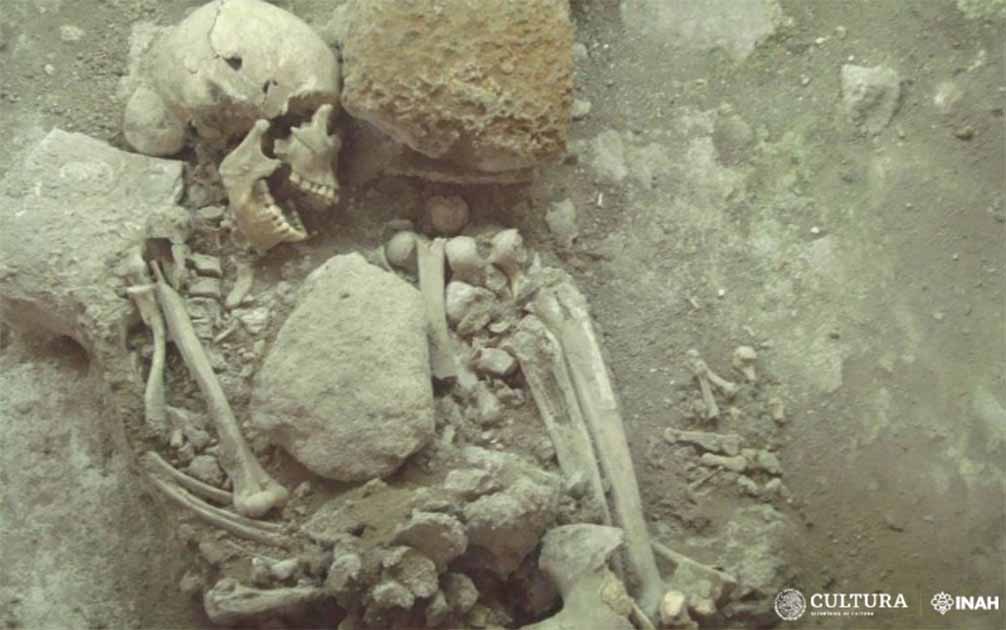Palace of Cortés Display Burial Is A Pre-Hispanic Woman, Not a Spanish Monk!
For 50 years, the public at the Palacio de Cortés, in Cuernavaca, Mexico, was able to glimpse a burial through an archaeological window, located at the entrance. The identity of this individual was attributed to a Spanish monk. Now, a recent study of the skeleton reveals that it actually corresponds to a Tlahuica woman, an Aztec tribe that founded its realm and royal residence on the Cuauhnáhuac Hill.
After the earthquake of September 19, 2017, which damaged the palace building, the federal Ministry of Culture, through the National Institute of Anthropology and History (INAH), undertook a restructuring process that resulted in the creation of the current Regional Museum of the Towns of Morelos.
- Mexican Earthquake Reveals Secret Temple in an Aztec Era Pyramid
- Five Legendary Lost Cities that have Never Been Found

Palacio de Cortés, in Cuernavaca, Mexico (INAH)
This renovation included a reassessment of the burial near the entrance, with the evaluation of its state of conservation and an historical investigation of the individual.
The physical anthropologists of the INAH Morelos Center - Pablo Neptalí Monterroso Rivas and Isabel Bertha Garza Gómez - recorded that the burial certificate referred to it belonging to the monk, Juan Leyva, who served the Marchioness Juana de Zúñiga y Arellano.
This conclusion was derived from its association with a jamb decorated with the four-petal flower, indicative of the last construction stage of the 16th century, and its location in the porch of the “old house”, the site where historical sources mark the friar's burial.
Due to this seemingly valid conclusion, the description plaque that accompanied the archaeological window for almost half a century read:
“Burial found in situ of a man with deformed vertebrae. Traditionally it is stated that it may be the monk Juan Leyva, who served the Marchioness Doña Juana de Zúñiga de Arellano, wife of Hernán Cortés and resident of this palace, however, due to the type of posture it may be an indigenous burial.”
As the physical anthropologists pointed out, archaeologist Jorge Angulo already warned that history could be rewritten.
In this regard, as explained in the printed issue of the supplement El Tlacuache, the magazine of the INAH Morelos Center, they found it strange: “the fact that a clergyman was buried outside his community, even more so that his burial system was not associated with the Catholic canons of the time.”
Something seemed amiss.
- Hernan Cortes: The Conquistador Who Beat the Aztecs
- Aztec Palace Complex and Later Cortes Home Unearthed in Mexico City

Burial from the Palace of Cortés is that of a Tlahuica woman. (INAH)
Revisiting the Evidence
“It is more related to a pre-Hispanic burial, which could well belong to the contact period or earlier, since it is a primary, direct and individual burial, with a burial space filled and covered by large rocks; The position was observed in lateral decubitus on the left side, with the extremities flexed towards the thoracic region.”
The more detailed analysis of the archaeological context would indicate that it was a burial offered at the closure of Stage III (1450-1500 AD).
This, as part of one of the expansions of Tlatocayancalli ("the house where the streams converge", in Nahuatl), where tributes from the populations dependent on the Cuauhnáhuac realm were collected.
Monterroso and Garza add that, through the anthropophysical study in situ, it was established that it is a female individual:
“cranial observation indicates a graceful subject without prominent muscular insertions […]; Likewise, the pelvis is clearly feminine. This is opposed to the fact that it is the monk Juan Leyva.”
The age of the individual was calculated from tooth wear and closure of cranial sutures to be approximately between 30 and 40 years. Despite the indication of “deformed vertebrae”, no diseases were observed in the skeleton, whose humerus (276 mm) was used to assess the approximate height of the individual, which must have been 1.47 meters (4’ 10”).
Likewise, there is a slight mark of intentional cephalic modification, which could indicate an erect tabular cranial type, which would also associate it with pre-Hispanic groups, possibly the Tlahuica.

The burial included two other, young individuals (INAH)
Experts indicate that scattered remains of two other individuals (an infant and a subadult) are associated with the burial and, in addition, the humerus of an adult cervid is observed, which must have served as a tool, because it shows traces of heat treatment.
In light of this evidence, the archaeological window was reopened with a new certificate, which states that the burial belonged to a “Tlahuica Woman.” Physical anthropologists conclude that this is an example of INAH's fulfillment of its task of preserving osteological heritage as a unique biological and cultural legacy of our ancestors.
This article is a translated press release from INAH.
Top image: Burial from the Palace of Cortés is that of a Tlahuica woman. Source: INAH
References
INAH Boletines, 2024. Burial from the Palace of Cortés is that of a pre-Hispanic Tlahuica woman, not that of a Spanish monk. Available online: https://www.inah.gob.mx/boletines/entierro-del-palacio-de-cortes-es-de-una-mujer-tlahuica-prehispanica-no-de-un-monje-espanol

















